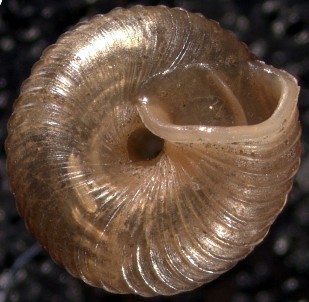Nutrition
"Mmm Mmm good!"
There are several adaptations that make terrestrial snails unique when it comes to nutrition. Terrestrial snails use a unique organ called a radula to obtain food from the environment they live in. A radula is a specialized organ used for feeding. This specialized organ is used by terrestrial snails to obtain food by scraping, cutting, or tearing food from the surface the snail is on (Hickman et al., 2007).
 Strobilops affinis mainly eats dead and decaying material such
as leaves and logs. The food S. affinis eats is found in damp
and slightly humid terrestrial habitats (Pilsbry, 1927-1939, 1939-1948).
For most snails plants serve as the primary food source. Snails also
feed on fungi, soil, and animal matter. Terrestrial snails are
considered generalists and are not picky when it comes to food (Hotopp, 2005).
Strobilops affinis mainly eats dead and decaying material such
as leaves and logs. The food S. affinis eats is found in damp
and slightly humid terrestrial habitats (Pilsbry, 1927-1939, 1939-1948).
For most snails plants serve as the primary food source. Snails also
feed on fungi, soil, and animal matter. Terrestrial snails are
considered generalists and are not picky when it comes to food (Hotopp, 2005).
Internal structures are well developed in terrestrial snails. Terrestrial snails have a complete digestive tract that is both complex and highly specialized for food eaten by the snail (Hickman et al., 2007). Food is transferred through the digestive tract and nutrients are obtained during the process. Food is commonly broken down by enzymes produced by the digestive gland. Waste is collected in the snail body and exits the snail through the anal pore (Hotopp, 2005). Terrestrial snails also have a kidney called a nephridium. This organ removes waste from the coelomic fluid. The nephridium can also serve as a mechanism of transport for gametes and aides in reproduction (Hickman et al., 2007).
Most terrestrial snails have an open circulatory system which consists of a heart, blood vessels, and blood sinuses. The open circulatory system transports blood or hemolymph to systems within the snail. Gas exchange is accomplished using a vascular mantle that functions as a lung. The lung has an opening on the mantle called the pneumostome which is used to let air into snail (Hickman et al., 2007).
How does Strobilops affinis
interact
with other species?
HOME